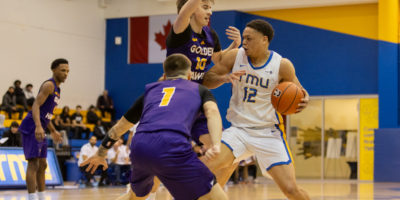By Paul Grossinger
Hoop dreams? Or hoop nightmares?
That is the question Metro Toronto educators, coaches, athletes and fans are asking after Metro’s latest episode of high school fan violence.
Two weeks ago at Sir Sanford Fleming Secondary School about 60 teenagesr broke into the gym and started a wild brawl during a game between two of Metro’s premier basketball teams, the Fleming Chargers and its North York rival, the Georges Vanier Vikings.
As a result of the unruly fan behaviour, the season for both teams was suspended indefinitely, two players from Fleming were suspended from school, and Vanier’s coach, Ken Earthy quite coaching after 25 years behind the bench.
Earthy, who suffered a concussion and required five stitches in his head after being struck by an 80-pound bench someone threw during the melee, believes that basketball games are out of control and void of any educational value.
The brawl was the fourth violent incident to occur on Metro’s playing fields in the last five months.
In November, a bus was trashed and fans injured after a melee broke out involving spectators after the Metro Bowl at Skydome.
Last month, police were called to a high school basketball tournament at Humber College after a brawl between fans and players.
And two weeks ago, Georges Vanier Secondary School had to beef-up security for a basketball game after an anonymous threat.
Fan violence is nothing new in the world of sports. Soccer hooliganism has been a major problem in Latin America and Europe for decades, and according to behavioural and social scientists, spectator violence can be explained in two ways: the fans’ learning theory or the Freudian notion of aggression catharsis.
The fan’s learning theory, or modelling as it is often called, believes that sports fans learn aggressive actions by observing aggressive athletes on the playing field.
The catharsis theory maintains that sports fans become violent to release frustrated energy—basically just “blowing off steam.”
Michael Smith, a researcher on violence in sport, disagrees with the notion of catharsis and believes that violence in sport contributes to violence in the crowd.
Sport psychologist and Ryerson professor Dr. Phyllis Elliott agrees with Smith.
“I’m not surprised (by the Fleming riot). It happens everywhere. It is the modelling of the culture.”
Elliott attributes high school spectator violence to a combination of a lack of solid security, more spectators than seats, standing crowds, young male crowds and anything that increases arousal and anxiety levels—like the importance of the game.
So what’s being done about the problem?
Well, boards of education, police and high school athletic staff have met to discuss possible solutions.
One solution is better security. Another solution being discussed is employing a bigger police presence at these games but this expensive at a cost of $38.50 an hour per officer.
Other solutions being considered are restricting attendance to events to parents, players, coaches and recruiters. And the ultimate solution, which is being considered in North York, cancelling the remainder of the season for all teams.
For Elliott, “clear-cut consequences” for violent behaviour may be a solution but is shocked by the suggestion of cancelling the basketball season.
“It should be a last resort. It is unimaginative…and unfair to punish athletes for behaviour of spectators. The athletes themselves are not the problem.”










Leave a Reply